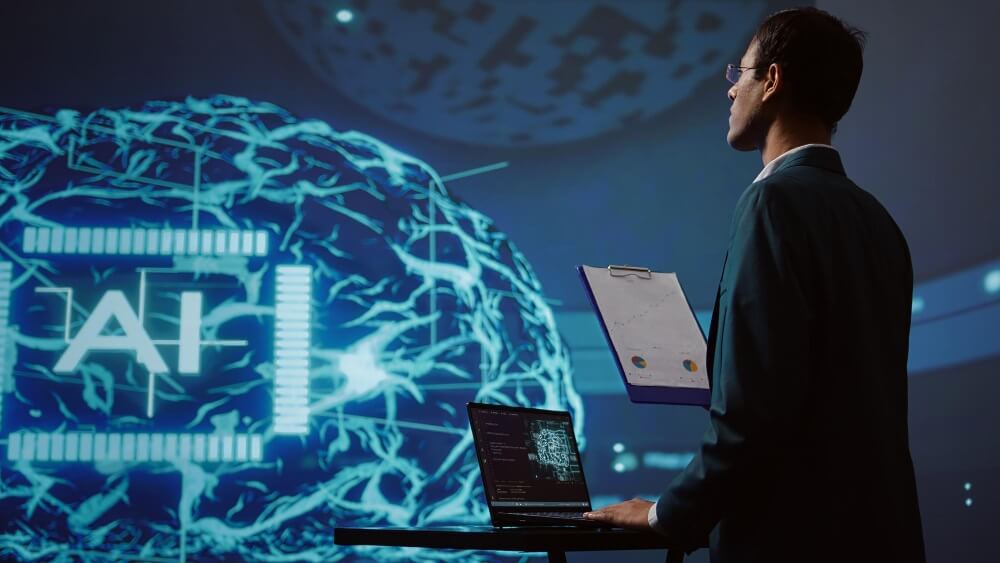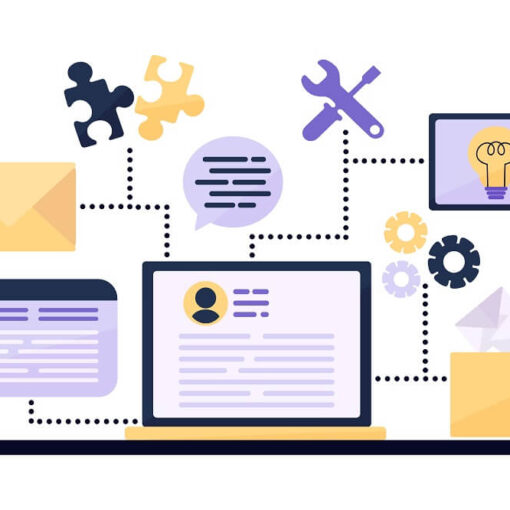Have you noticed how banking is getting smarter and faster? That’s because of AI, or Artificial Intelligence. How AI is Transforming the Banking Industry in big ways. It’s like giving banks a super-smart brain that can think and learn independently. This new ‘brain’ is making banking easier for you and safer for everyone.
From spotting bad guys trying to steal money to helping you get a loan faster, AI is working behind the scenes in your bank. It’s making things happen that used to take days in just seconds. In this article, we’ll look at how AI is shaking up the banking world. We’ll see how it’s making your money safer, helping you get better service, and even making it easier for you to get financial help when you need it.
What is AI in Banking?
AI in banking refers to computer systems that can do tasks usually done by humans. These systems can understand speech, make choices, and learn from what happens. In banks, AI looks at lots of information very fast. It helps banks give better service and avoid problems. Before, banks did things the old way to help customers, spot fraud, and check if people could pay back loans.
Now, as more things go digital, banks are using AI more and more. It helps them work better and give customers better products. AI can talk to customers, find odd money movements that might be fraud, and decide if someone should get a loan. It makes banking faster and often more accurate than when people do all these jobs.
Key Areas How AI is Transforming the Banking Industry
Fraud Detection and Prevention
One of the most significant impacts of AI in banking is fraud detection and prevention. Fraud is a major concern for banks and their customers. AI systems can analyze vast amounts of transaction data in real time, looking for unusual patterns that might indicate fraudulent activity.
For example, if a customer suddenly makes a large transaction in a foreign country, the AI system can flag it as suspicious. This immediate analysis helps banks prevent fraud before it affects customers. By using AI, banks can protect their clients’ money more effectively, which boosts customer trust.

Enhanced Customer Service
Another critical area where AI is making a difference is in customer service. Many banks are now using AI-powered chatbots and virtual assistants to handle customer inquiries. These chatbots can answer common questions, assist with basic transactions, and even provide personalized financial advice.
For instance, if customers want to check their account balance or transfer money, they can simply chat with a bot instead of waiting for a human representative. This instant support improves customer satisfaction and allows human staff to focus on complex issues requiring a personal touch.
Personalized Financial Products
AI is also changing how banks offer personalized financial products. With AI, banks can analyze customer data to understand individual preferences and financial behaviors.
One great example is Deutsche Bank’s “Next Best Offer” project. This AI-driven initiative helps bank advisors recommend funds, bonds, or shares that suit their client’s needs. When an algorithm identifies risks in a customer’s portfolio, it can suggest adjustments, helping the customer make informed decisions. Banks can increase satisfaction and loyalty by tailoring offerings based on customer behavior.
Credit Scoring and Risk Assessment

AI is also transforming banking credit scoring and risk assessment. Traditional credit scoring often relies on limited criteria, sometimes leading to inaccurate assessments. With AI, banks can consider broader factors, leading to more accurate evaluations of a customer’s creditworthiness.
This improvement benefits banks by reducing the risk of default and helps more people access credit. A more accurate credit scoring system can provide opportunities for individuals who might otherwise be denied loans based on traditional metrics.
Financial Crime Prevention
Preventing financial crime is another area where AI shines. Systems like Deutsche Bank’s “Black Forest” model analyze transactions to spot suspicious activity. The AI examines various factors, such as transaction amounts, currencies, and the nature of the transaction (online or in-person).
If something seems off, like a large transfer to a high-risk country, the system flags it for further investigation. By learning from past data and customer feedback, these AI systems become better at identifying real threats, ultimately helping to combat organized crime, money laundering, and tax evasion.
Supporting Sustainability Transformation
As the world increasingly focuses on sustainability, AI is helping banks support this transformation. Starting in 2023, European banks must disclose which of their transactions are environmentally friendly or “green.” AI plays a crucial role in this classification process.
For instance, machine learning algorithms can automatically classify loans for solar or wind power projects as green. This automation makes the process much easier for banks and ensures they can comply with new regulations while supporting sustainable practices.

Data Handling and Process Optimization
AI also significantly improves data handling and process optimization in banks. With its ability to process large amounts of data quickly, AI can streamline traditional banking operations. For example, AI can automate repetitive tasks like data entry, allowing staff to focus on more complex and valuable work.
This efficiency saves time and reduces human error, leading to better service overall. By optimizing processes, banks can offer their customers faster and more reliable services.
How Can AI Make Decisions in Banking?
AI is essential in bank decision-making. By analyzing historical data and customer behavior, AI helps banks make informed choices. For instance, it can suggest personalized products, like credit cards, that align with a customer’s spending habits. This customization increases customer satisfaction, making clients feel valued.
Additionally, AI identifies potential risks by spotting unusual transaction patterns. If a customer suddenly withdraws a large amount, AI can flag this for review, allowing banks to act quickly and protect their clients. This proactive approach builds trust as customers appreciate the efforts to keep their accounts safe.
AI also improves loan approvals by analyzing a wider range of factors beyond traditional credit scores. It speeds up decisions and allows more people access to loans, making the banking process more efficient and inclusive.
What is an Example of AI in Banking?

A common example of AI in banking is the use of chatbots. Many banks have implemented AI-driven chatbots to handle routine customer inquiries, such as checking balances or making transfers. These chatbots are available 24/7, providing quick responses and improving customer service.
For example, Bank of America’s Erica is a virtual assistant that helps customers manage their accounts and pay bills. It even offers financial advice based on user behavior. This use of AI not only enhances the customer experience but also allows human staff to focus on more complex issues.
Conclusion
As we’ve seen, AI is revolutionizing the banking industry in numerous ways. From enhancing fraud detection and improving customer service to personalizing financial products and streamlining operations, AI is making banking smarter, faster, and more secure. This technology is changing not just how banks work internally but also how customers interact with their finances.
Looking ahead, the role of AI in banking is set to grow even further. We expect more personalized services, faster loan approvals, and even better fraud prevention. As AI continues to learn and improve, it will open up new possibilities in banking that we can’t even imagine today. While challenges like data privacy and ethical use of AI remain important considerations, one thing is clear: AI is set to play a crucial role in shaping the future of banking, making it more efficient, accessible, and customer-focused than ever before.





